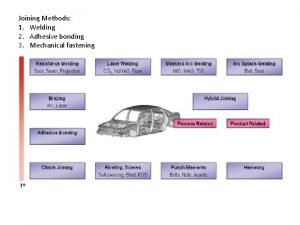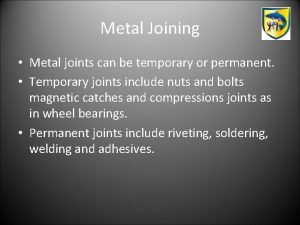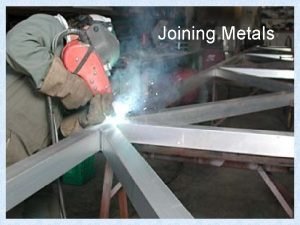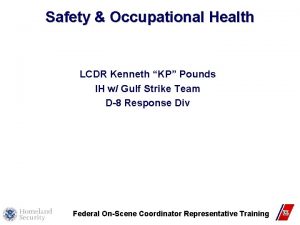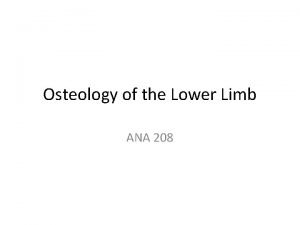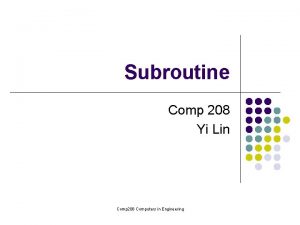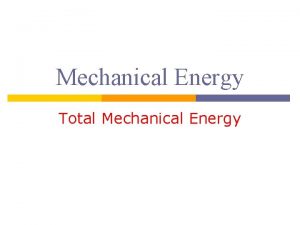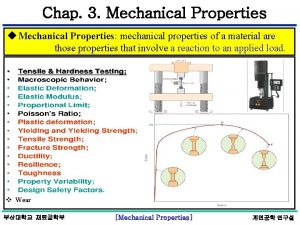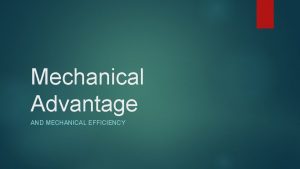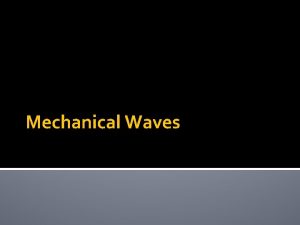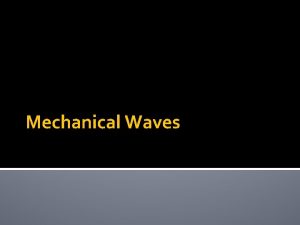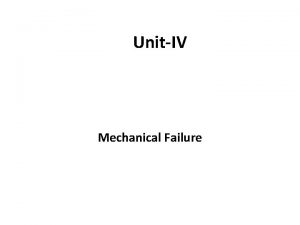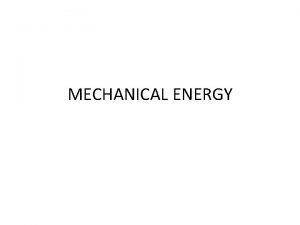Mechanical Methods of Joining Chapter 15 IT 208













- Slides: 13

Mechanical Methods of Joining Chapter 15 IT 208 Chapter 15 1

Competencies l l l Identify the unique applications for fasteners Identify the different types of fasteners for shafts Translate the nomenclature used to identify a thread IT 208 Chapter 15 2

FASTENERS Needs of the Application l Two needs of the application that must be determined are: • Is the joint temporary or permanent? • Is relative movement permitted? IT 208 Chapter 15 3

Threaded Fasteners Use when the application requires a nonpermanent fastening. Threads • • • The most common thread is the standard 60° vee-thread (screws) Acme threads are used when high strength is required. (vices) Buttress thread is used for applications that require a high force in one direction. Square threads are applicable for precision positioning. Knuckle and round threads are often used on glass and rolled metal applications. IT 208 Chapter 15 4

Threaded Fasteners l Left & Right Handed Threads • As a threaded part is turned clockwise, it moves either away from you (a right-hand thread) or toward you (a left-hand thread). l Thread Pitch • All screws come in standard diameters and number of threads per inch (Table 15 -1). The distance between two adjacent peaks or crests on the thread is the pitch. IT 208 Chapter 15 5

Threaded Fasteners l Two Major Classes of Thread Pitch • Unified National Coarse (UNC) • The coarse thread has more resistance to “stripping” the threads out, but less resistance to shearing the bolt due to over torquing • Unified National Fine (UNF) • The fine thread has more threads per inch; it is used to make fine adjustments at the expense of strength. IT 208 Chapter 15 6

Threaded Fasteners Different Types of Screws l Machine Screws • l l commercially available with approximately 12 standard head shapes and with several standard finishes. Wood screws • have a tapered thread so as to wedge their way into the grain of the wood. Sheet metal screws • are a cross between machine screws and wood screws: They have a tapered thread at the tip, but a straight thread for most of their length. IT 208 Chapter 15 7

Specifying a Thread Example: ¼ - 20 UNC 2 A – LH – Hex Hd. Cap Screw x 2 The translation of this is: ¼ = ¼-inch nominal diameter 20 = 20 threads per inch UNC = Unified National Coarse series 2 = class 2 fit A = external thread LH = left-hand thread (omit this if right-hand thread) Hex Hd. = hexagonal head Cap Screw = type of fastener 2 = 2 -inch bolt length IT 208 Chapter 15 8

Grades of Bolts are specified and made in several grades depending on the strength and hardness of the bolt. . Grades run from 0 to 8 with grade 0 being the softest and weakest. • • • A grade 0 bolt has no proof load or specified hardness. Grade 3 and grade 5 bolts are available at most hardware stores. Grade 8 bolts have proof loads of a minimum of 120, 000 psi. Figure 15 -4 shows the markings of some of these bolts. IT 208 Chapter 15 9

NONTHREADED FASTENERS Removable with a small effort: l Not easily removable: Nails l • Nails are an excellent choice when the application • requires the fastener to withstand considerable shearing force but very little tension. Classified as temporary fasteners and work in only a few materials (wood, mainly) IT 208 Chapter 15 10

NONTHREADED FASTENERS Staples • act like two nails side by side, so they solve the revolution problem mentioned earlier. Pins • they all perform the function of resisting shearing forces. Rivets • are pins that have a thick diameter compared to their length. They are used (in tension) to hold two parts tightly against each other. IT 208 Chapter 15 11

NONTHREADED FASTENERS Fasteners for Shafts What are the needs of the application? • There is a major need to transfer power from the • motor to the pulley. The pulley should not work its way off the end of the shaft. IT 208 Chapter 15 12

NONTHREADED FASTENERS Keys, Keyseats, and Keyways • A keyseat is a slot that is cut into the motor shaft. • The keyway is cut into the hole through the center of the pulley. Then the slots are lined up and the key is fitted into both slots simultaneously. • Splines are toothed external and internal connectors that allow for longitudinal (back and forth) motion on a shaft. IT 208 Chapter 15 13
